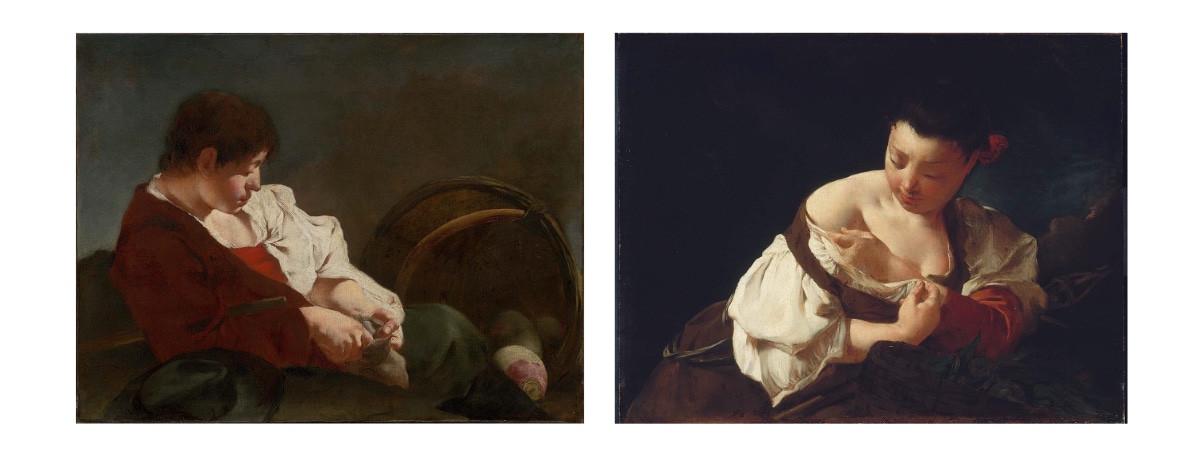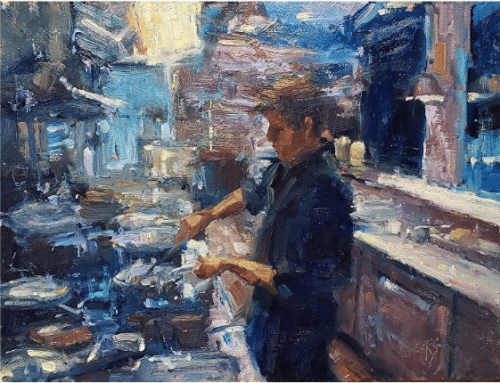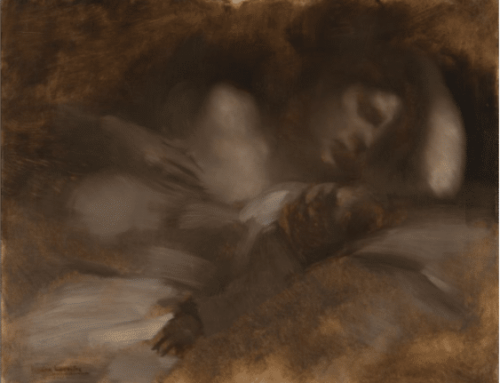Piazzetta pairs his own version of the style with his own sensibility. Where Caravaggio and most of his followers went for highly dramatic, often religious or mythological subject matter, Piazzetta and to a lesser extent Crespi, sought nearly the opposite: a quiet serenity found in the unguarded moments of everyday lives, an artistic approach known as genre painting. Crespi used the genre like an illustrator; Piazetta raised it to a higher level of lyrical seriousness.
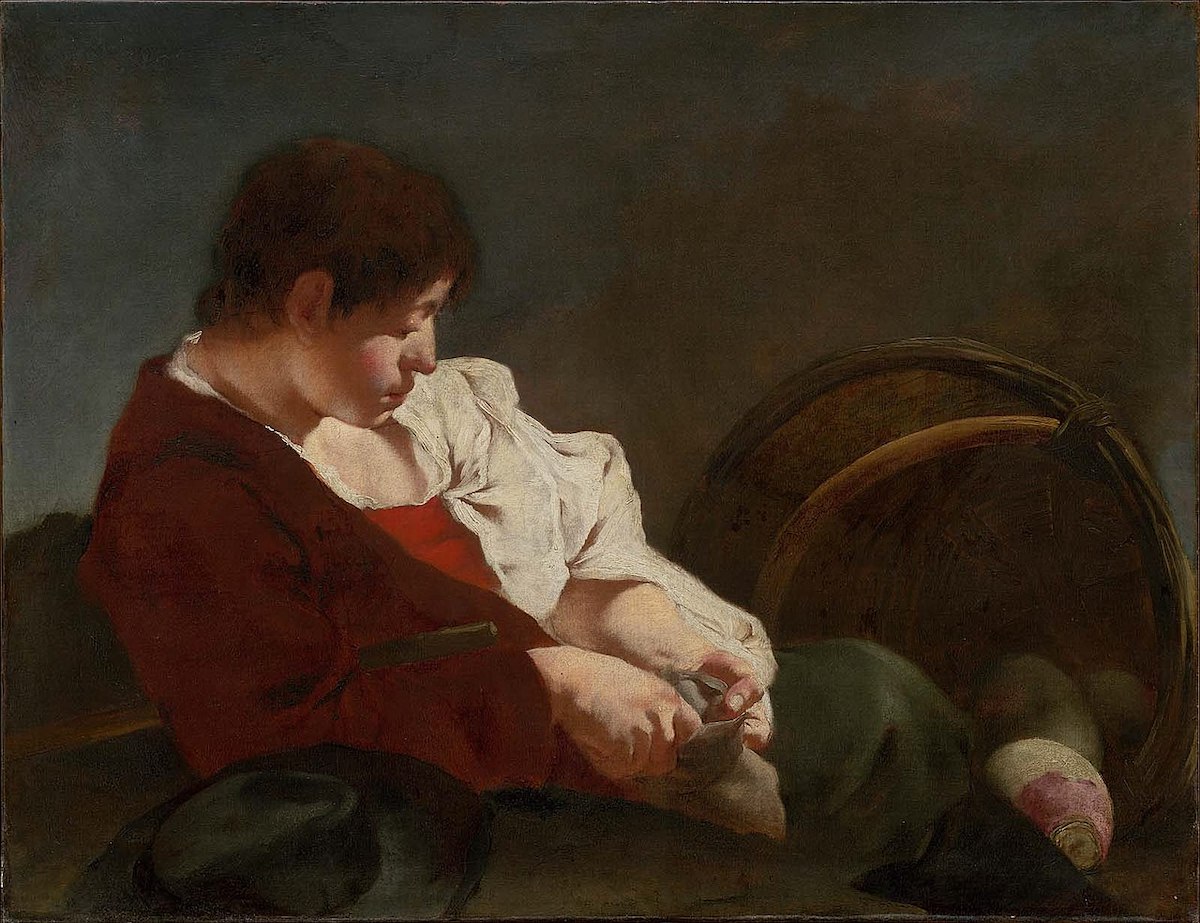
Giovanni Battista Piazzetta, Peasant Boy at a Market,
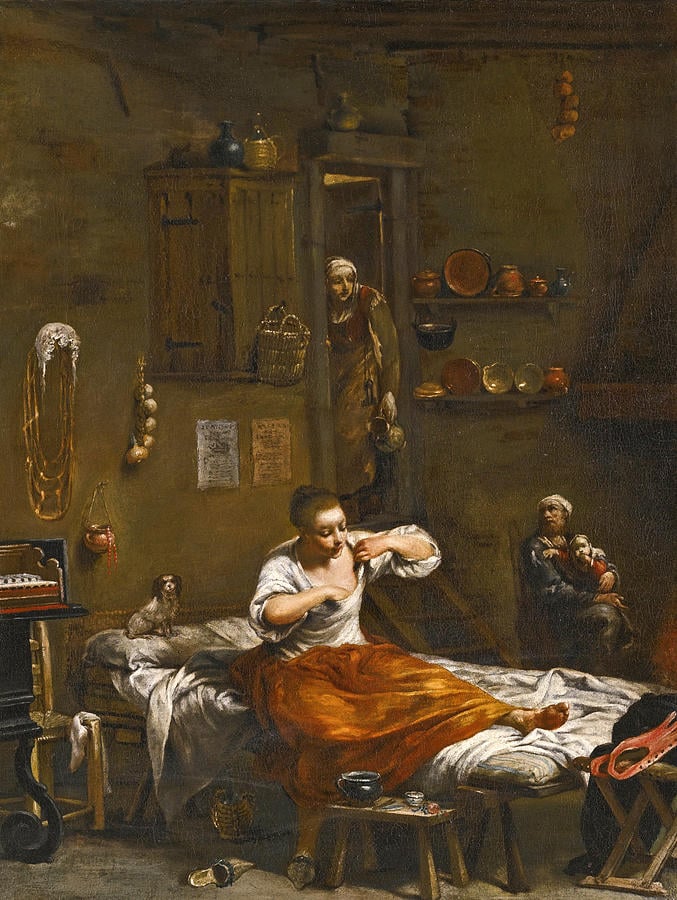
Guiseppe Maria Crespi, La Pulce, or the Flea Hunt
Crespi’s painting unsparingly details the process with what I read as a harsh cynicism. To me it seems Crespi mocks his flea-huntress’s poverty. The title alone (The Flea Hunt, vs. Piazetta’s Girl Catching a Flea) suggests he’s looking at this as a typical, perhaps comical scene rather than the sympathetic portrait of an individual. He presents the woman as part of an extended family living in squalor, but he casts the figures in roles I think contemporaries would have read with a double meaning: the man with the child and the woman in the doorway carrying the water pitcher are posed to look like a nursemaid and house maid respectively, as if servants to the “lady of the house” – who in reality is just as impoverished as they are, as evidenced by her parasite problem.
In contrast, Piazzetta’s bolder, more stylized tenebrism (the high-contrast, theatrical play of light and shadow associated with the Caravaggisti) fully and lovingly transforms the moment.
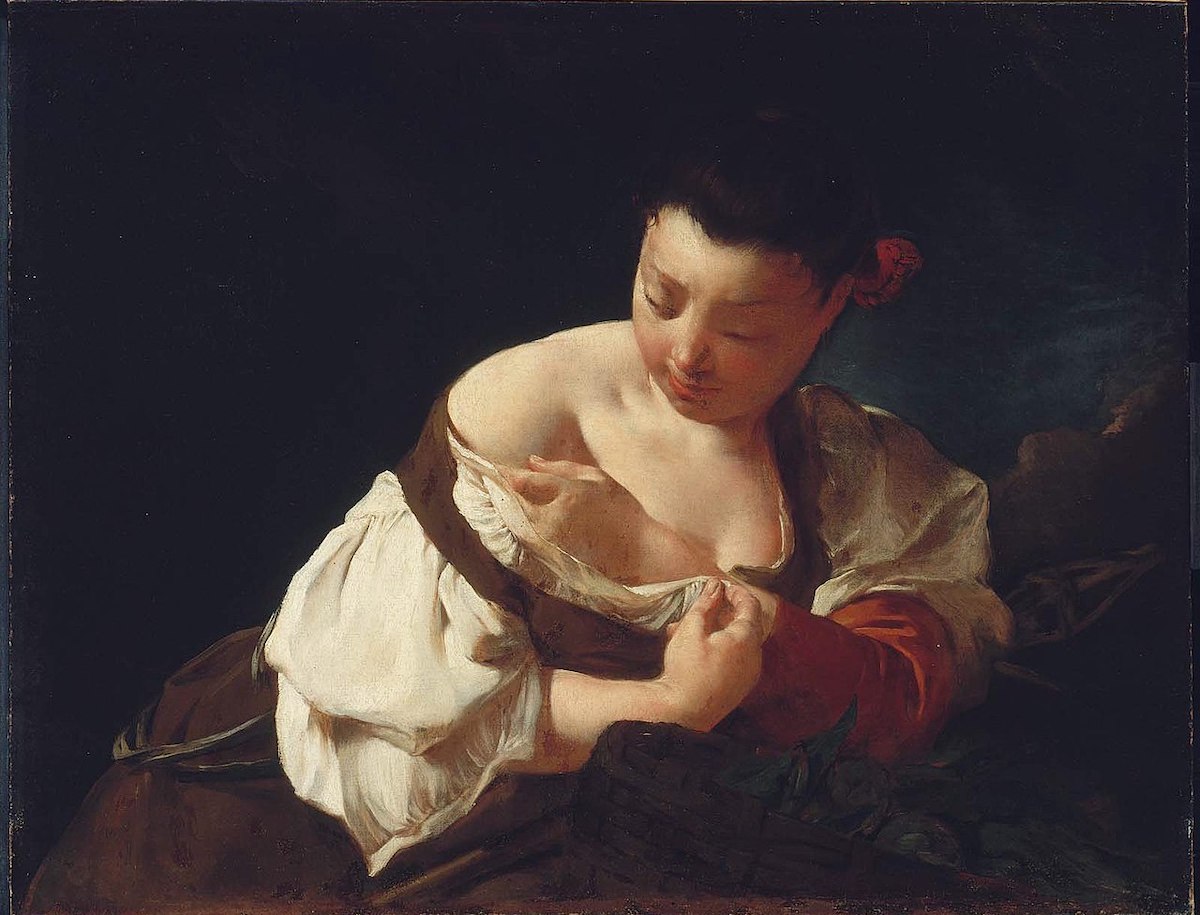
Giovanni Battista Piazzetta, Peasant Girl Catching a Flea
Piazzetta’s painting whole-heartedly redeems the otherwise low and sordid by touching the common lot of humanity with beauty and dignity. Piazetti illuminates his subject and her glowing, healthful flesh with lighting normally reserved for “church paintings” of Biblical figures and Christian saints.
Uncommonly Beautiful
There’s a sort of archetypal, universal quality in each of these two works, born of rendering ordinary people’s lives with a bold, quasi-religious nobility. They both present the common as the uncommonly beautiful. They work beautifully together too.
If you love portrait paintings like Piazzetta’s, artist Oliver Sin, who’s associated with the classical portrait tradition, teaches in a manner that simplifies portraiture with an instructional video that happens to be on special.
I Must Have Flowers
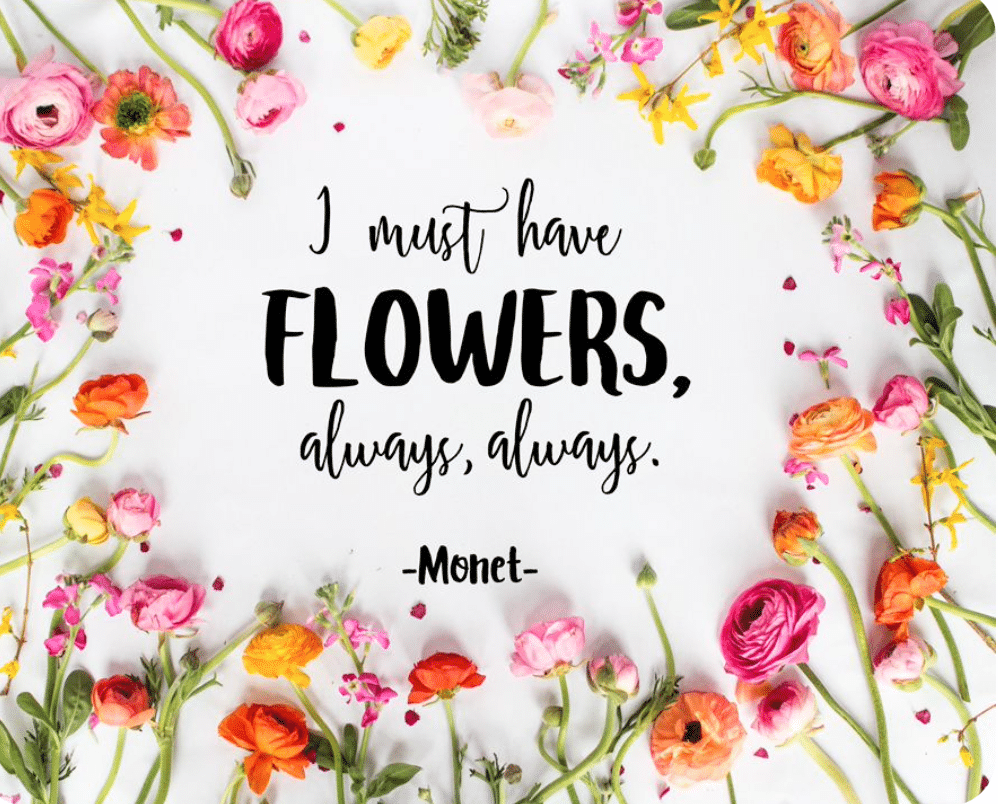
There’s a supposed Monet quote that’s become an inspiring meme that goes, “I must have flowers, always always.” I think people like it because the words sound like a passionate determination to live a colorful life.
I can picture a young Audrey Hepburn saying them over her shoulder while plunking down a vase full of lilacs on a Parisian coffee table. As a meme, it’s like a battle cry against the dull and overly familiar; it might as well say, “I refuse to live a drab existence, now and forever!” But I’m pretty sure Monet never really said them.
Monet definitely wrote, in a letter to his dealer, “What I need most are flowers, always.” He was being quite literal, referring to his love of gardening and his beloved home in Giverny. He also seems to have said somewhere, “What I need most of all is color, always, always.” So the meme appears to be a mashup.
Of course, Impressionistic painting, with its built-in love of vibrant color and light, still inspires, as do flowers of all kinds, always, always: Flowers, Impressionism, even the made-up meme – important reminders that for all its confusion and disappointments, our world can be, if we will and make it so, a beautiful place.
– Chris

